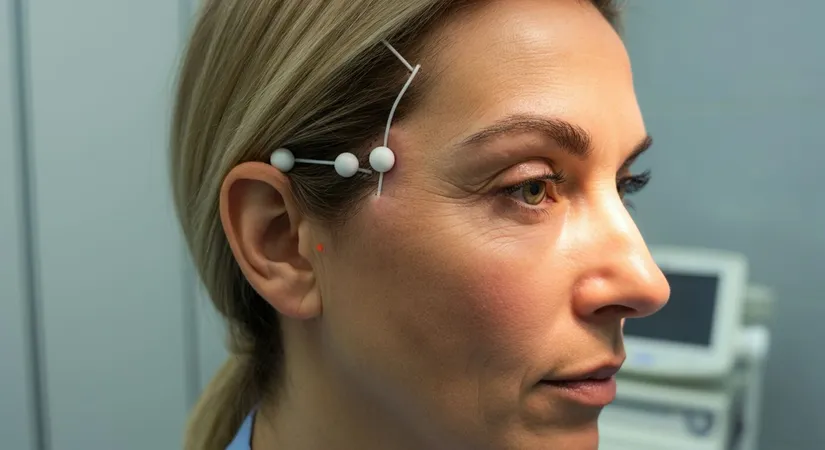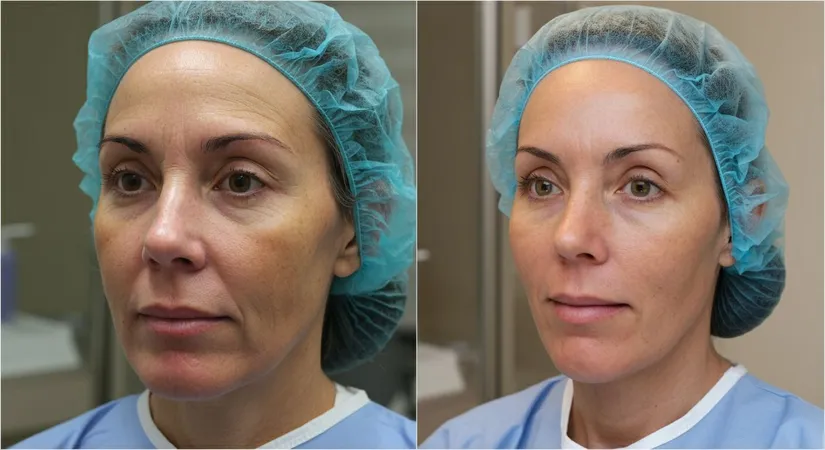Discover the Benefits of a Temple Lift
Reimagine your youth with a Temple Lift. Understand the process, recovery, and top surgeon selection.
The quest for youthful appearance drives many to explore the latest advancements in cosmetic procedures. Among these, the Temple Lift stands out, offering rejuvenation without the need for extensive surgery. This minimally invasive technique enhances the upper facial area, providing patients with a refreshed look. Against the backdrop of modern medical advancements, let's delve into the various aspects of the Temple Lift.
Understanding Temple Lift Procedures
How a Temple Lift Works
A Temple Lift is a cosmetic surgery procedure aimed at rejuvenating the upper facial region, specifically targeting the temples and eyebrows. Over time, these areas can sag due to aging and gravity, leading to a tired or aged appearance. By making incisions hidden within the hairline, surgeons can lift and tighten the skin, restoring a youthful contour.
- Hidden incisions ensure minimal visible scarring.
- Improves overall facial symmetry and expression.
- Can be combined with other facial rejuvenation procedures for enhanced results.
For example, a patient in their 50s might notice a significant lift in their brow area, leading to a more alert and youthful appearance. Another individual may choose to combine the procedure with a non-surgical facelift to achieve a more comprehensive rejuvenation.
Temple Lift Recovery Time
Recovery from a Temple Lift surgery typically involves a few weeks of healing, during which patients may experience swelling and bruising. However, most individuals can return to their daily activities within a week or two, with full results visible in a few months.
- Initial recovery phase lasts about one to two weeks.
- Swelling and bruising gradually subside over several weeks.
- Final results are usually apparent after a few months.
For instance, a patient might notice reduced swelling by the third week, allowing them to resume social activities with confidence. Another example is someone who sees the full lifting effect by the third month, enhancing their overall facial harmony.

How Does a Temple Lift Work?
Innovative Techniques in Temple Lift Surgery
Temple lift surgery has evolved significantly, incorporating advanced techniques that enhance both safety and aesthetic outcomes. Surgeons now employ minimally invasive methods, making small incisions near the temporal region to lift and reposition tissues. This approach not only tightens the skin but also minimizes visible scarring, ensuring a more natural appearance.
- Minimally invasive techniques reduce recovery time.
- Advanced suturing methods provide a seamless finish.
- Enhanced precision leads to more symmetrical results.
For instance, a patient opting for this procedure might experience a quicker recovery due to the less invasive nature of the surgery. Another example is the use of fine sutures, which help maintain the lifted position without noticeable marks. Additionally, the precision of modern techniques ensures that the results align well with the patient's natural facial contours.
Steps Involved in the Temple Lift Procedure
- Initial consultation to assess facial structure and desired outcomes.
- Small incisions are made near the temples, often hidden within the hairline.
- Tissues are carefully lifted and secured with fine sutures for a natural look.
During the initial consultation, surgeons evaluate the patient's facial anatomy to tailor the procedure to their specific needs. The strategic placement of incisions ensures minimal visibility, while the lifting and suturing process is designed to achieve a harmonious and youthful appearance. This method not only rejuvenates the temple area but also enhances overall facial symmetry.

Temple Lift Recovery: What to Expect
Managing Post-Procedure Symptoms
After undergoing temple lift surgery, patients often experience minor swelling and bruising. These symptoms are common and typically diminish within two weeks. To aid recovery, it's crucial to follow the surgeon's post-operative instructions, such as keeping the head elevated. This practice can significantly reduce swelling and promote faster healing.
- Swelling and bruising are normal and temporary.
- Elevating the head helps reduce swelling.
- Adhering to post-op care instructions accelerates recovery.
For example, a patient who diligently follows these guidelines might notice a reduction in swelling by the end of the first week, allowing them to feel more comfortable and confident. Another individual may find that keeping their head elevated while sleeping significantly decreases morning puffiness.
Resuming Daily Activities
Most individuals can return to their regular activities within one to two weeks after a temple lift. This timeline varies depending on personal healing rates and adherence to recovery protocols. Patients often enjoy long-lasting results, with the rejuvenated appearance becoming more apparent as the healing process completes.
- Initial recovery allows for light activities after one week.
- Full resumption of normal routines typically occurs by the second week.
- Long-lasting results enhance facial aesthetics over time.
For instance, a patient might return to work after ten days, feeling comfortable with their appearance. Another example is someone who gradually resumes exercise routines by the second week, ensuring they do not strain the healing areas. As the weeks progress, the enhanced facial contours become more pronounced, providing a refreshed and youthful look.

Choosing the Best Temple Lift Surgeon
Evaluating Surgeon Credentials and Experience
When selecting a surgeon for a temple lift, it's essential to evaluate their credentials and experience. Look for board certifications in cosmetic surgery, which indicate a high level of training and expertise. Additionally, consider the surgeon's experience with facial rejuvenation procedures, as this can significantly impact the quality of the results.
- Board certifications ensure adherence to high standards.
- Extensive experience in facial surgeries enhances skill.
- Specialization in cosmetic procedures ensures focused expertise.
For example, a surgeon with over a decade of experience in temple lifts is likely to have refined techniques that lead to better outcomes. Another example is a professional who regularly attends workshops and conferences to stay updated on the latest advancements in cosmetic surgery. These factors contribute to a surgeon's ability to deliver safe and aesthetically pleasing results.
Assessing Patient Feedback and Visual Outcomes
Patient reviews and before-and-after galleries are invaluable resources when choosing a temple lift surgeon. Reviews can provide insights into patient satisfaction and the surgeon's bedside manner, while galleries showcase the surgeon's ability to achieve natural-looking results. It's important to look for consistency in the outcomes, as this reflects the surgeon's skill and attention to detail.
- Read patient reviews to gauge satisfaction levels.
- Examine before-and-after photos for consistency.
- Consider the surgeon's ability to achieve natural results.
For instance, a surgeon with numerous positive reviews and a portfolio of successful temple lifts demonstrates reliability and expertise. Another example is a gallery that consistently shows subtle, natural enhancements, indicating the surgeon's proficiency in maintaining facial harmony. These elements are crucial in ensuring that the chosen surgeon can meet your aesthetic goals effectively.
Innovative Techniques in Temple Lift Surgery
Excellence in Temple Lift Recovery and Results
Frequently Asked Questions
What is a Temple Lift and how does it work?
What is the recovery time for Temple Lift surgery?
Is Temple Lift surgery safe?
Who is a candidate for Temple Lift surgery?
How do I choose the best Temple Lift surgeon?
Discover the Path to Healthy Beauty with estethica's Expert Care!
📞 Call Now for Your Free Consultation!